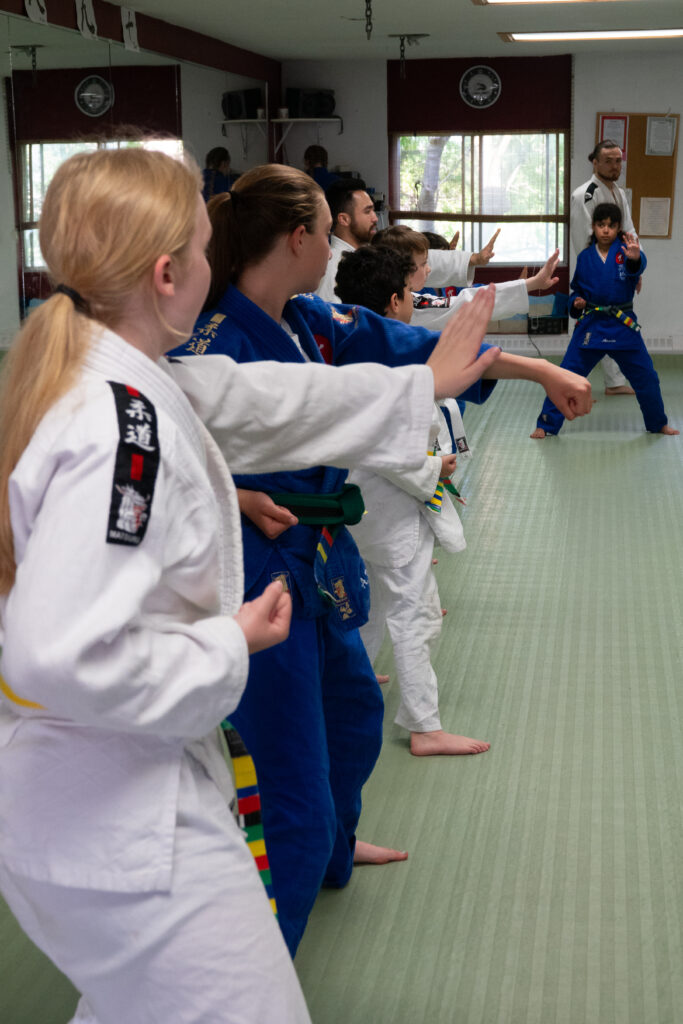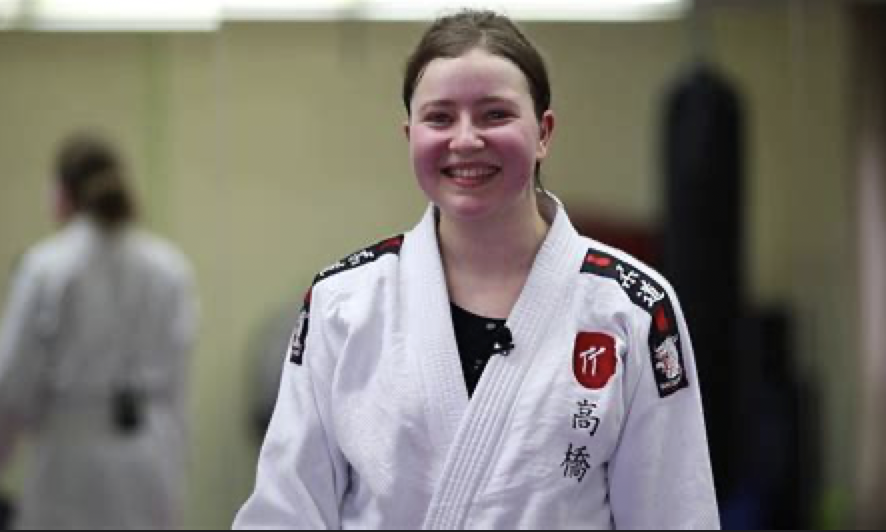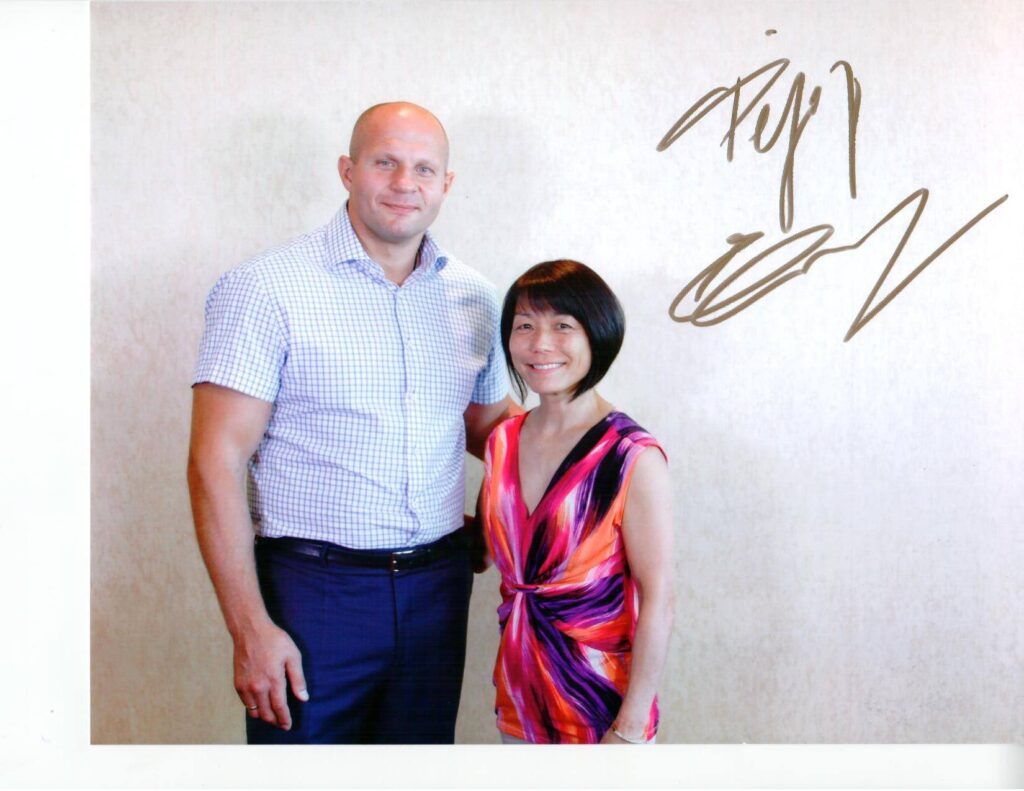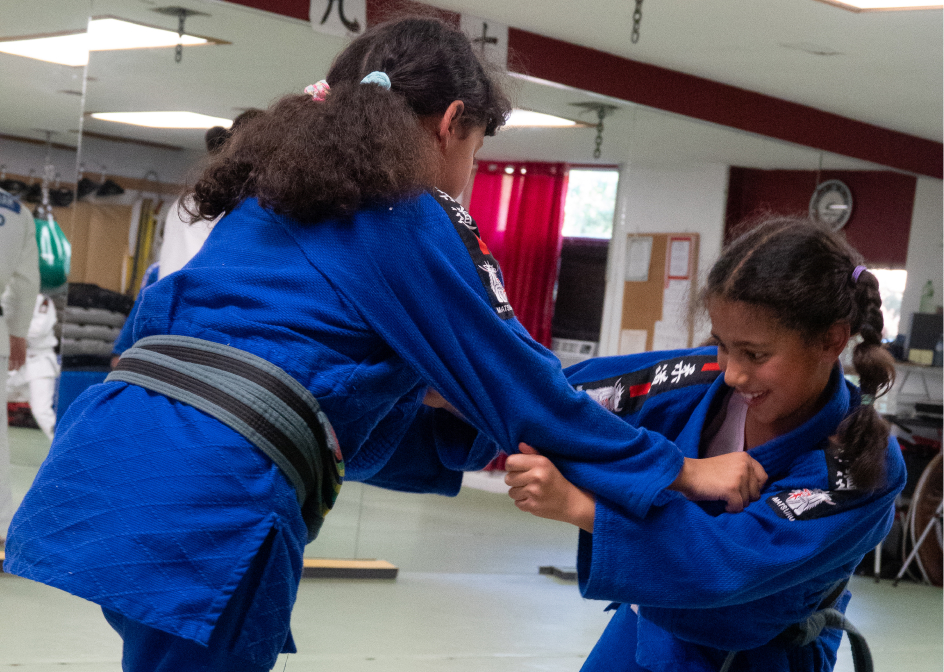Menu
Close
Menu
Close

Martial arts training offers remarkable benefits for people of all ages and fitness levels. From children developing discipline to seniors improving balance, these ancient practices have evolved into comprehensive systems for personal growth. Martial arts training provides a unique combination of physical fitness, mental well-being, and self-defence skills that can transform lives regardless of when you begin your journey.
Whether you’re looking to build confidence, reduce stress, or simply get in better shape, martial arts offers a path forward. We’ve seen countless students experience positive changes in their lives through consistent practice. The holistic benefits extend far beyond just learning to kick and punch, creating lasting improvements in both body and mind.
Martial arts training provides exceptional benefits for physical health. The practice combines strength development with cardiovascular conditioning while enhancing flexibility and coordination through structured movement patterns.
Martial arts serves as a full-body workout that builds muscle strength in unique ways. Different styles target various muscle groups through strikes, blocks, and stances that require sustained effort.
Training sessions naturally incorporate:
The cardiovascular benefits are significant as well. High-intensity training periods improve heart health by increasing heart rate and enhancing blood circulation.
We’ve observed that consistent practitioners develop remarkable endurance over time. Their bodies become more efficient at oxygen utilization, resulting in better stamina for both training and daily activities.
Martial arts movements require a high degree of body coordination that develops with practice. Regular training improves your awareness of body position in space.
Flexibility gains come from:
This improved flexibility helps prevent injuries both in training and everyday life. We find that students of all ages show remarkable improvements in balance and coordination after just a few months of training.
Hand-eye coordination sharpens through drills requiring precise timing and movement. This translates to better motor skills and spatial awareness in daily activities.
Consistent martial arts practice establishes healthy exercise habits. Unlike sporadic workouts, martial arts creates a structured framework for physical fitness.
The benefits extend beyond the training floor:
We recommend at least 2-3 training sessions weekly for optimal results. This frequency allows for skill development while providing adequate recovery time.
The social aspect of training keeps motivation high, unlike solitary exercise routines. Working alongside others with similar goals creates accountability and enjoyment that sustains long-term commitment.
Martial arts training goes far beyond physical fitness, offering powerful benefits for the mind and emotional wellbeing. The mental discipline required in martial arts practice shapes how we think and feel in our daily lives.
Martial arts requires exceptional focus and discipline to master complex movements and techniques. Students learn to concentrate on precise actions while tuning out distractions a skill that transfers to school, work, and other life areas.
When we practice forms or kata, we must remember sequences and execute them with proper technique. This mental exercise strengthens our ability to concentrate for longer periods.
Students develop self-discipline through regular practice and perseverance. Even when progress feels slow, martial arts teaches us to continue showing up and putting in the effort.
Many instructors incorporate meditation techniques that further enhance concentration abilities. These mindfulness practices help practitioners remain present during training and manage attention more effectively in daily life.
As we progress through belt levels, we experience tangible evidence of our growth. This builds confidence that extends beyond the dojo.
Martial arts creates a supportive environment where we learn to:
Children who train in martial arts often show improved confidence in social situations. They carry themselves with greater assurance and communicate more effectively with peers and adults.
Adults benefit similarly, often reporting increased self-confidence in professional settings. The ability to defend oneself physically also creates a sense of security that positively affects self-image.
Regular martial arts practice reduces stress and anxiety through physical activity that releases tension. The combination of exercise, focused breathing, and mindfulness creates powerful stress relief.
Training provides a healthy outlet for negative emotions. Instead of bottling up frustration or anger, we channel these feelings into productive physical activity.
The community aspect of martial arts dojos helps combat isolation. We form meaningful connections with fellow students and instructors who share our journey.
Many practitioners report improved mood and reduced symptoms of depression. The regular release of endorphins during training contributes to these positive mental health outcomes.
Martial arts also teaches us to maintain incredible concentration under pressure, helping manage anxiety in challenging life situations.
Martial arts training provides crucial self-defence capabilities that extend beyond physical techniques. These skills help practitioners stay safe in potentially dangerous situations through both practical combat knowledge and heightened awareness.
Martial arts teaches practical self-defence techniques that work for people of all ages and body types. We focus on efficient movements that use leverage and proper technique rather than just strength. This makes martial arts effective for smaller individuals facing larger opponents.
Students learn how to block strike, escape from grabs, and counter-attack when necessary. The techniques are designed to be simple and effective under stress. Many forms include:
With consistent practice, these movements become ingrained as muscle memory, allowing for quicker reactions in real situations.
One of the most valuable aspects of martial arts training is developing improved focus and concentration. We teach students to maintain awareness of their surroundings at all times, identifying potential threats before they escalate.
Training includes exercises that sharpen reflexes and reduce reaction time. Through partner drills and sparring sessions, practitioners learn to read body language and anticipate movements. This heightened awareness becomes a natural habit that extends beyond the training hall.
Students also develop confidence in their abilities, which often prevents confrontations before they begin. Potential aggressors typically target those who appear uncertain or unaware of their surroundings.
We emphasize that the best self-defence is avoiding dangerous situations altogether through proper awareness and assessment skills.
Martial arts training extends far beyond physical techniques. The practice develops fundamental character traits and essential life skills that benefit practitioners of all ages, creating a foundation for success in many areas of life.
Martial arts training places tremendous emphasis on respect – for instructors, fellow students, and oneself. Students learn to bow before entering the training space and when addressing teachers, establishing a mindset of humility and consideration.
This respectful approach extends to conflict resolution. We see students develop the ability to handle disagreements calmly and thoughtfully rather than reacting emotionally.
Martial arts teaches de-escalation techniques and emotional control. Students learn that physical techniques are a last resort, not the first option when facing conflict.
Many schools incorporate specific lessons on peaceful problem-solving, helping practitioners become more effective communicators in all areas of life.
The journey through martial arts ranks requires significant discipline and perseverance. Students face challenges, plateaus, and moments of frustration that teach valuable lessons about commitment.
Regular training builds mental toughness. When faced with difficult techniques or challenging sparring sessions, practitioners learn to push through discomfort rather than give up.
This persistence transfers to academic, professional, and personal goals. We notice students becoming more focused on long-term growth rather than seeking instant gratification.
Martial arts provide a structured path for personal development through belt systems. Each advancement represents not just technical ability but also character growth and self-control.
Students set incremental goals and experience the satisfaction of achievement through dedicated effort, building confidence that lasts a lifetime.
Martial arts training offers more than just physical benefits – it connects practitioners to rich traditions and diverse communities. Training halls become places where cultures blend and friendships form across backgrounds.
Martial arts practice introduces students to fascinating cultural elements from around the world. When joining a Judo class, you’ll learn Japanese terminology and traditions alongside physical techniques. Our school celebrates cultural holidays and special events that honour their art’s heritage.
Traditional schools often incorporate meditation, philosophy, and historical teachings. We’ve seen how martial arts culture extends beyond fighting techniques to include values like respect, humility, and perseverance.
Jigoro Kano’s development of Judo demonstrates how martial arts evolve while maintaining cultural connections. His philosophy of adapting traditional methods created a bridge between Eastern wisdom and Western practicality.
Martial arts dojos and academies attract people from all walks of life. When training at places like the Tina Takahashi Martial Arts, you’ll meet students of varying:
This diversity creates a unique social environment where everyone shares common goals. We find that training partners quickly become friends and mentors.
Cross-training between different martial arts styles further expands your community connections. A karate practitioner might train in judo, creating relationships that span across different martial traditions.
Our school organizes community events, tournaments, and seminars that bring together practitioners from various locations and backgrounds.
Martial arts training offers numerous physical and mental benefits across all age groups. These benefits range from improved health metrics to enhanced social development and cultural appreciation.
How does martial arts training improve physical health?
Martial arts provides a full-body workout that targets multiple muscle groups simultaneously. This comprehensive approach to fitness helps develop strength, flexibility, and endurance.
Regular practice can significantly improve cardiovascular health. We’ve observed that consistent training lowers blood pressure and heart rate through its positive impact on circulation and heart strength.
Martial arts training also enhances body coordination and balance. These physical skills develop gradually through repetitive movements and stance work.
What are the mental health benefits associated with regular martial arts practice?
Martial arts training reduces stress and anxiety through mindful movement and focused breathing techniques. The meditative aspects of practice create a mental reset from daily pressures.
We find that students often report improved mood and mental clarity after training sessions. The endorphin release from physical activity combined with the satisfaction of skill development, creates positive emotional states.
Regular practice builds mental resilience and the ability to stay calm under pressure. These skills transfer effectively to handling real-world challenges and stressful situations.
In what ways do martial arts benefit children and adolescents in their academic and social development?
Martial arts training boosts confidence in children, giving them the self-assurance to participate more fully in academic and social situations. This newfound confidence often leads to improved classroom performance.
Children learn respect and proper social interaction through the formal structure of martial arts classes. The traditional etiquette teaches them how to interact respectfully with peers and authority figures.
Martial arts provides a healthy outlet for energy while teaching focus and attention skills. These enhanced concentration abilities frequently translate to better academic performance.
Can martial arts training be beneficial for older adults, and if so, how?
Older adults experience improved mobility and balance through martial arts practice, reducing fall risk and increasing physical independence. Modified training approaches ensure safety while still delivering benefits.
Martial arts provide a valuable social connection for seniors. Regular class attendance creates community bonds and combats isolation that can occur in later years.
The cognitive aspects of learning techniques and forms help maintain mental sharpness. We see clear cognitive benefits as older students memorize movement patterns and tactical concepts.
What role does martial arts play in fostering discipline and self-control?
Discipline is a cornerstone benefit of martial arts training. Students learn to follow instructions precisely and commit to regular practice, developing habits that serve them in all life areas.
Martial arts teaches emotional regulation through challenging physical situations. Students learn to control reactions under pressure, a skill that transfers to handling daily frustrations.
The belt progression system rewards consistent effort and perseverance. This structured advancement model shows students the direct relationship between disciplined work and achievement.
How does the practice of traditional martial arts contribute to cultural understanding and appreciation?
Traditional martial arts preserve important cultural heritage and history. Students gain insight into the values and philosophies of the cultures where these arts originated.
We incorporate cultural context into training, helping students understand the deeper meanings behind movements and traditions. This approach creates respect for diverse cultural perspectives.
Language elements and terminology from the art’s country of origin foster appreciation for global diversity. Students often develop an interest in the broader cultural aspects beyond just the physical techniques.
Please go to: https://tinatak.com/about-us/ to take advantage of a Two Week Special Offer!



Hours of Operation:
Monday – Friday
8:00 a.m. – 8:00 p.m.
Saturday – Open Mats
2:00 p.m. – 3:00 p.m.
Recent Posts
Blog
The Beginner’s Guide to Starting Martial Arts: Essential First Steps for New Practitioners
Judo vs. Jiu-Jitsu: Understanding the Key Differences Between These Ancient Martial Arts
Why Martial Arts are Excellent for Child Discipline: Building Character Through Structure and Respect
How Martial Arts Teach Children Anti-Bullying Skills: Building Confidence and Self-Defence
Copyright © 2024 |
Tina Takahashi Martial Arts
Designed by
ElissDesign.com





